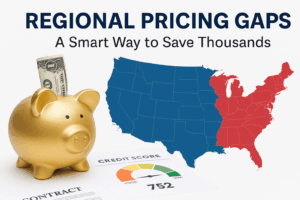Used car prices are not random. They follow patterns shaped by data. Predictive pricing models use that data to estimate what a vehicle should cost based on its age, mileage history, location, condition, and market demand. For buyers navigating today’s volatile market, this matters more than ever.
Used cars are no longer the budget-friendly alternative they once were. In many cases, they cost more than new models did five years ago. That shift makes pricing accuracy critical. A model that can predict fair value helps buyers avoid overpaying and spot deals that others miss.
What Is a Predictive Pricing Model?
A predictive pricing model is a system that estimates current or future vehicle prices using historical data. It analyzes trends across thousands of listings and considers key factors such as:
- Mileage history
- Accident records
- Service logs
- Location
- Seasonality
- Market demand
These models do not guess. They calculate. By comparing similar vehicles and adjusting for differences, they can tell you what a 2018 Honda Civic with 45,000 miles should cost in Phoenix versus Chicago.
Why Mileage History Matters
Mileage history is one of the most influential factors in used car pricing. A car with 20,000 miles drives differently than one with 80,000. But it is not just about the number—it is about the pattern.
A car that racks up 20,000 miles in one year may have been used for long commutes or delivery work. That kind of wear is different from a car that reaches the same mileage over three years with regular maintenance.
Predictive models look at mileage history in context. They weigh it against service records, ownership changes, and driving conditions. That helps buyers understand not just how far a car has gone, but how well it has held up.
How Predictive Models Help Buyers
Used car buyers face a tough market. Prices swing quickly. Inventory changes daily. Sellers do not always list fair prices. Predictive models give buyers a way to cut through the noise.
Here’s how they help:
- Spot Overpriced Listings Models flag vehicles that cost more than similar ones. That saves buyers from paying too much.
- Find Undervalued Deals Some sellers list cars below market value. Models help buyers find those listings before others do.
- Compare Across Regions Prices vary by location. A car in Florida may cost less than the same model in New York. Models reveal those gaps.
- Track Price Drops Models can alert buyers when prices fall, helping with timing and negotiation.
- Understand Value Over Time Buyers can see how a car’s value changes with age and mileage. That helps with long-term planning.
Where These Models Come From
Most predictive pricing models are built on large data platforms. These platforms collect millions of records from auctions, dealerships, private sales, and service centers. They use machine learning to identify patterns and adjust for outliers.
Popular sources include:
- Kelley Blue Book
- Edmunds
- Carfax
- Black Book
- Dealer-specific tools
Each model has its own formula. Some weigh mileage history more heavily. Others focus on accident data or regional trends. The best models combine multiple sources and update frequently.
Limitations to Watch For
Predictive models are useful, but they are not perfect. They rely on clean data. If a car’s history is missing or inaccurate, the model may misjudge its value.
Also, models do not account for personal preferences. A buyer may value a rare color or trim more than the market does. That kind of detail does not show up in the numbers.
Buyers should use models as a guide, not a rule. They help with pricing, but they do not replace a test drive or a professional inspection.
Why This Matters Now
Used car prices remain high. Supply chains are still tight. Interest rates affect monthly payments. In this environment, every dollar counts.
Predictive pricing models give buyers an edge. They help people make informed choices, reduce guesswork, and protect their budgets.
For sellers, these models also matter. They help set fair prices and avoid long waits. But for buyers, the benefit is clear: better deals and fewer regrets.
Buying a used car is a big decision. Predictive pricing models make it smarter. They turn raw data into real value and help buyers understand what a car is worth based on facts..
Mileage history, location, and condition all play a role. Models bring those pieces together. They do not just show prices. They reveal patterns. And for buyers who want to save money and avoid mistakes, those patterns matter.




